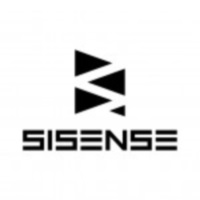Startup Spotlight: Sisense’s Big Data Analytics
If there is one trait that distinguishes successful startups from less successful ones, it is coming up with the right idea at the right time. Even the best ideas will not take off if the market is not ready for them.
 While still in high school, two of the founders of Israeli Big Data startup Sisense created a tool called MDX Builder that helped users creating database queries avoid logic problems and syntax errors. Neither the tool nor BiSense, the company they created to sell it, succeeded, perhaps because the concept of Big Data analytics had yet to capture the collective imagination of companies everywhere.
While still in high school, two of the founders of Israeli Big Data startup Sisense created a tool called MDX Builder that helped users creating database queries avoid logic problems and syntax errors. Neither the tool nor BiSense, the company they created to sell it, succeeded, perhaps because the concept of Big Data analytics had yet to capture the collective imagination of companies everywhere.
Elad Israeli and Eldad Farkash continued to tweak the idea, however, after they met like-minded friends pursuing computer science degrees at university. The group of pals turned in a revised tool for a class project. When a professor gave them an A-plus on the project, the fledgling entrepreneurs decided to found a new company called SiSense. (The lowercase “s” came later.)
Sisense operated in stealth mode from roughly 2004 until 2010, said Sisense Chief Evangelist Adi Azaria, one of the company's five founders, with a handful of employees and “almost no funding.” In about 2008 the men came up with the idea for Elasticube, an analytics database that utilizes a combination of RAM, disk and CPU in a way that enables a single commodity server to handle huge amounts of data.
On a Growth Tear
In 2010 Sisense got its first infusion of venture capital, $4 million in series A financing from Genesis Partners (Israel), Opus Capital (U.S.) and an original angel investor. Since then, buoyed by the rising interest in Big Data analytics, the company has been on a steep growth trajectory.
Last year was a huge one for Sisense. It snagged a $30 million series C funding round in June, bringing its total investment to $44 million. Subscription revenues tripled for the fourth straight year. It earned several accolades, including a spot on Gartner's Cool Vendors in Analytics 2014 list. It also tweaked its branding, lowercasing the second “s” in its name and redesigned its website for a more professional look.
Gearing up for further growth, Sisense recently hired a new CEO, Amir Orad. He co-founded a cybersecurity company that was acquired by RSA Security and later grew business almost sixfold while serving as CEO at NICE Actimize.
Sisense's goal, Azaria said, is to “become one of the top players in the data analytics market within two years.” While that sounds ambitious, Azaria said it's doable thanks to the company's unique technology and comprehensive solution.
Unusual Approach to Big Data Analytics
Sisense is one of only a handful of companies that address both the back end and front end of Big Data analytics, Azaria said, noting that competitors like Tableau Software and Qlik focus on front-end data visualizations. “Doing visualization is easy. The real challenge is to make sense of different data sources, create connections between them and allow business users to analyze it,” he said.
Pointing out that products of some competitors store data completely in-memory, Azaria said, “If you need to analyze two different data sets or two different cubes, it is not enough; you'll need more servers or another box in your data warehouse.”
In Sisense's “crowd accelerated analytics” model, Azaria said, the query processing engine only loads and unloads data to and from RAM on-demand. So RAM is only taken up by data you need access to immediately, while the rest of the data is stored on disk.
“We load into RAM what is needed only when it is needed,” he said. “Even if you have billions of rows of data, lots of tables and lots of sources, most companies use between 100 to 200 columns for most queries. Why load an entire data set if you only need a couple hundred columns of data?”
In addition, data is stored on the disk as separate columns, rather than consecutive rows as in relational databases like MySQL. This storage tactic eliminates bottlenecks and creates opportunities for compression.
“We understand the columnar structure so well, we manage to give you a faster solution than anyone else. We also use something called the L1L203 cache to break up the data so we can utilize it like nobody else. The end result is blazing fast speed for the end user,” Azaria said.
ESPN, Merck and Sony are among customers listed on Sisense's website. But most of its “more than a few thousand” customers are small and midsize companies eager to launch analytics initiatives, Azaria said. “Our goal is to provide a solution that is fast to deploy and won't bankrupt them. We do all inside sales, and smaller companies are quite open to that. We have no annual fee and no hidden support or maintenance fees, so the value is very clear.”
Fast Facts about Sisense
Founded: 2004
Founders: Eldad Farkash, Elad Israeli, Guy Buyango, Adi Azaria, Aviad Harell
Product: Business intelligence analysis and visualization solution
HQ: Tel Aviv
Employees: About 120
Customers: More than a thousand, including Merck, ESPN and Sony
Funding: $44 million, with investors including DFJ Growth, RTP Ventures, Battery Ventures, Genesis Partners and Opus Capital
Ann All is the editor of Enterprise Apps Today and eSecurity Planet. She has covered business and technology for more than a decade, writing about everything from business intelligence to virtualization.

Public relations, digital marketing, journalism, copywriting. I have done it all so I am able to communicate any information in a professional manner. Recent work includes creating compelling digital content, and applying SEO strategies to increase website performance. I am a skilled copy editor who can manage budgets and people.



